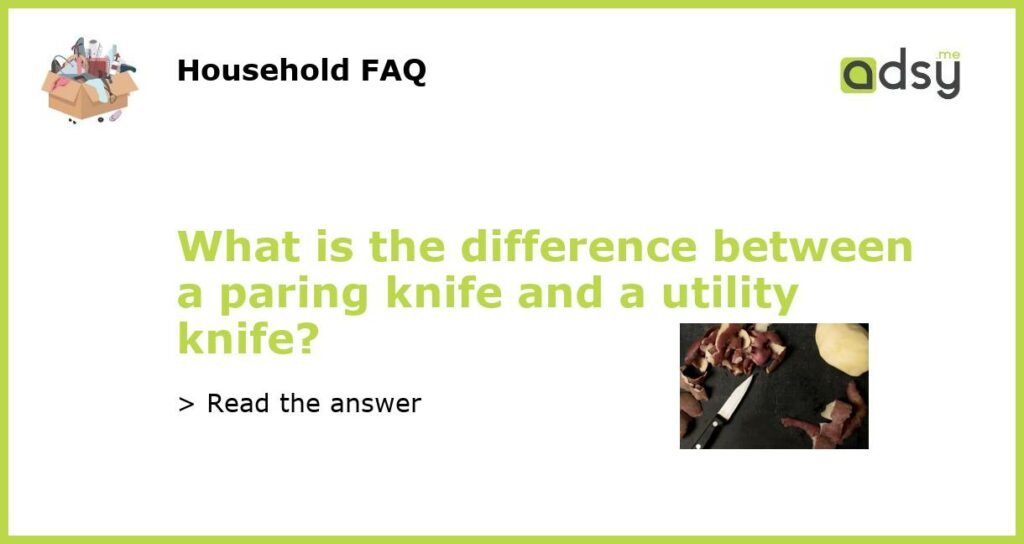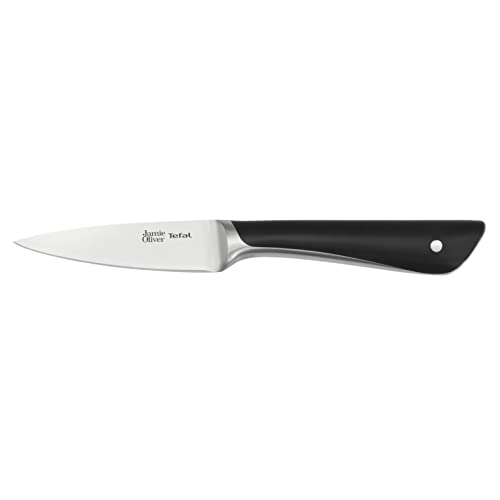What is the Difference Between a Paring Knife and a Utility Knife?
When it comes to kitchen knives, there are many different types available for various purposes. Two commonly used knives that often cause confusion are the paring knife and the utility knife. While these knives may look similar, they are designed for different tasks and have distinct characteristics that set them apart.
Paring Knife: Small, Precise, and Versatile
A paring knife is a small, short-bladed knife typically measuring 3 to 4 inches in length. Its narrow and pointed blade makes it ideal for intricate tasks that require precision and control. Paring knives are commonly used for tasks such as peeling fruits and vegetables, trimming and slicing small ingredients, and deveining shrimp. They are also great for creating decorative garnishes or removing seeds from fruits.
Utility Knife: All-Purpose and Versatile
A utility knife, on the other hand, is a larger and more versatile knife with a blade length ranging from 4 to 7 inches. It is often described as a mid-sized knife that falls between a paring knife and a chef’s knife. Utility knives are designed to handle a wide range of tasks, making them a popular choice for everyday use in the kitchen. They are commonly used for slicing, dicing, and chopping various ingredients, such as fruits, vegetables, and meat. Utility knives are also handy for cutting sandwiches or bagels and can be used as a makeshift bread knife when needed.
Differences in Blade Design
One of the key differences between a paring knife and a utility knife lies in their blade design. Paring knives typically have a straight and narrow blade with a pointed tip. This design allows for increased precision and control when performing delicate tasks. Utility knives, on the other hand, often have a slightly curved or straight blade with a rounded or pointed tip. This design provides a more versatile cutting edge, making it suitable for a wide range of tasks.
Differences in Blade Length and Thickness
Another distinguishing factor between paring knives and utility knives is their blade length and thickness. Paring knives are generally shorter and thinner compared to utility knives. The shorter length of the paring knife allows for increased maneuverability and control when working with small ingredients. Additionally, the thinner blade of a paring knife enables precise slicing and peeling. In contrast, utility knives are longer and thicker, which gives them more cutting power and stability. The extra length and thickness make utility knives more suitable for tasks that require more strength or require cutting through tougher ingredients.
Choosing the Right Knife for the Task
Ultimately, the choice between a paring knife and a utility knife depends on the specific task at hand. If you need to peel an apple, remove the seeds from a tomato, or create detailed garnishes, a paring knife would be the best choice. On the other hand, if you need to slice, dice, or chop a variety of ingredients, a utility knife would be a more versatile option. It’s worth noting that both knives are essential tools in any kitchen and can complement each other well, so having both in your knife collection is highly recommended.






